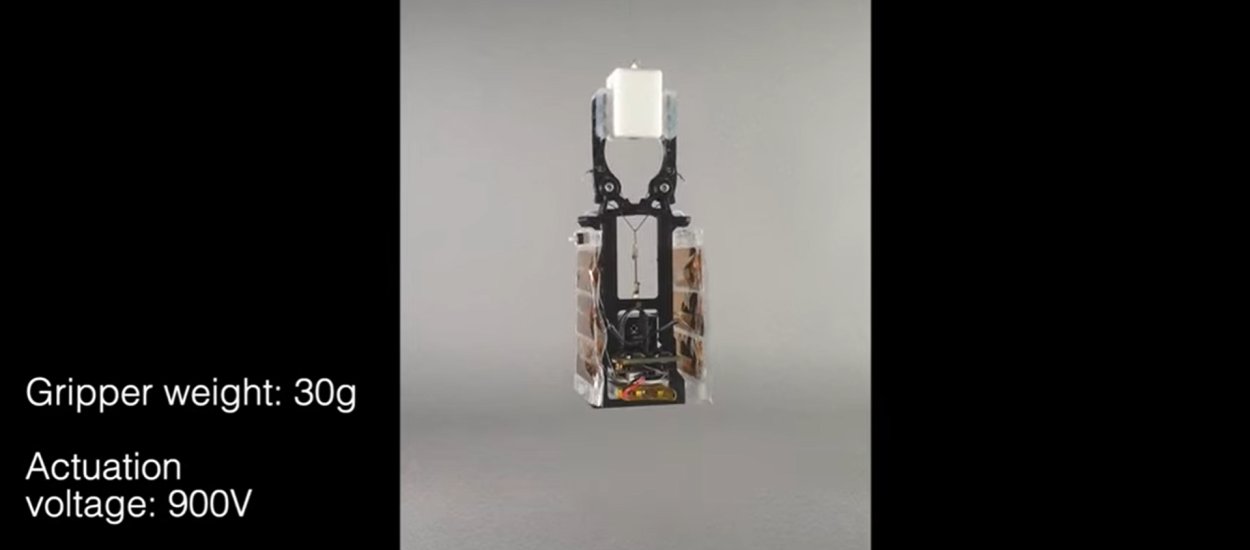At the ETH laboratories in Zurich, scientists have made a breakthrough in robotics by developing “artificial muscles” that can change the way robots operate and interact with their environment. This is not only a step towards lighter and more flexible robots, but also an opportunity to improve other areas of people's lives.
Previous attempts to create artificial muscles have faced many problems, including the high electrical voltage required for them to function. Electrostatic motors operate at voltages between 6,000 and 10,000 volts, which has led to several limitations, such as the need for large, heavy voltage amplifiers and the inability to operate in water. In addition, these higher voltages also pose a greater risk to people, as well as having significant limitations on the scope of potential applications.
Compared to previous tests, HALVE actuators appear promising because they significantly reduce the electrical voltage required. The secret lies in the new coating of artificial muscles, Developed by Stefan Daniel Gravert and his team. It is a multi-layer coating, combining a highly permeable ferroelectric material with a layer of electrodes, covered with a layer consisting of stable polymers. In this way, it is possible to store a relatively large amount of electrical energy between this material and the electrodes, making it possible to obtain large driving forces at relatively low voltages.
It is extremely important that the HALVE artificial muscle is waterproof, which opens new horizons in terms of applications. The electrodes are completely surrounded by a protective coating – the actuators can therefore operate in water or conductive liquids. Moreover, thanks to the layered structure of the “sacs” in which the “artificial muscles” are located, they are more durable and less susceptible to damage and possible failure.
Scientists have already tried it in real applications. Grapples equipped with these actuators are not only small and lightweight, but also efficient. They are able to support their weight, pick up objects and lift them into the air with a wire using only 900 volts. The entire handle – including electronics – weighs just 45 grams. Another example is the independent swimmer who moves in the water thanks to HALVE actuators, reaching a speed of up to three centimeters per second. This type of capability can be successfully used, for example, in water transport or construction work carried out in water.

Scientists are now preparing to develop enough of the half to produce such engines on a larger scale. Companies interested in collaboration are already contacting scientists – so the potential of this technology seems great. Scientists state that the healthcare industry could also benefit from the benefits of HALVE, more specifically, all types of prosthetics or even complete exoskeletons for people with paralyzed limbs. HALVE seems to have a lot of potential – but a lot now depends on whether the initial interest actually ends up in real use of the technology in practice. I frankly admit that I am a huge supporter of this project – I see the potential it has, for example in the context of people with disabilities. For some time I was caring for a person with progressive quadriplegia and it was a great struggle for the patient. But it's not just him, his family is also suffering.

Echo Richards embodies a personality that is a delightful contradiction: a humble musicaholic who never brags about her expansive knowledge of both classic and contemporary tunes. Infuriatingly modest, one would never know from a mere conversation how deeply entrenched she is in the world of music. This passion seamlessly translates into her problem-solving skills, with Echo often drawing inspiration from melodies and rhythms. A voracious reader, she dives deep into literature, using stories to influence her own hardcore writing. Her spirited advocacy for alcohol isn’t about mere indulgence, but about celebrating life’s poignant moments.










